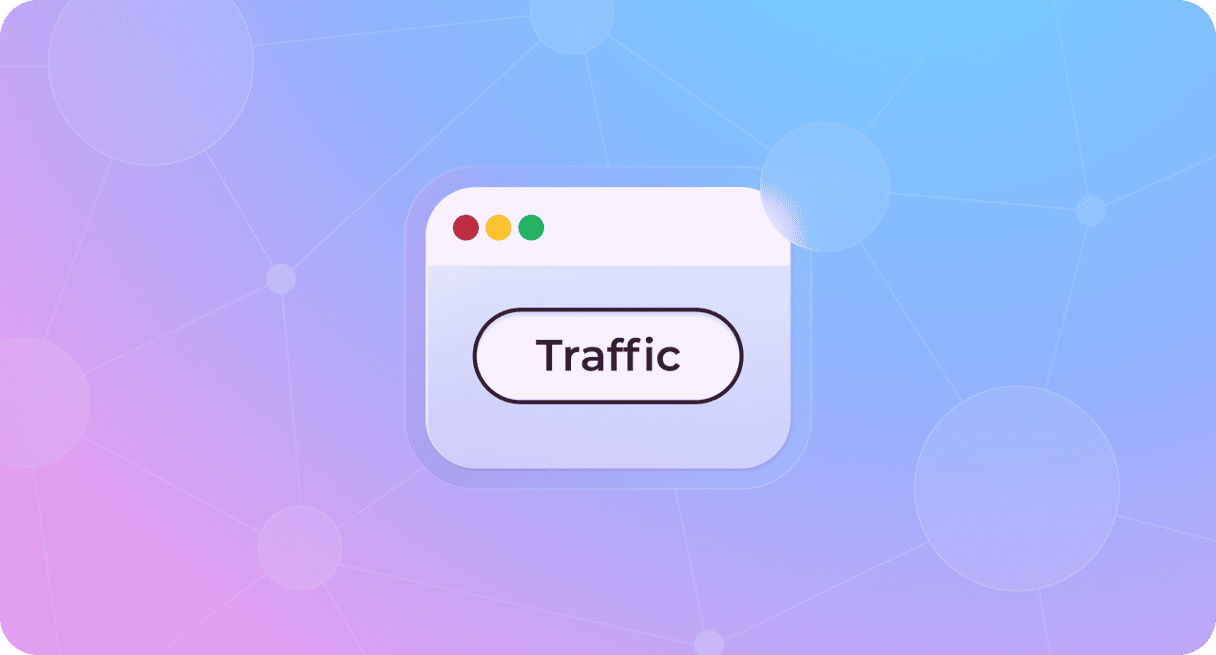Do you think your office could survive without the internet? Even for just a day? I don’t think so. Nowadays, it’s almost impossible. Companies rely so heavily on the internet and not just any internet — fast internet. The last thing you want is to explain to your CEO that productivity is down due to a slow internet connection. What’s more, none of your coworkers will be able to do their job properly if something like that happens.
The top reason why the internet connection speed drops is network congestion. So, in today’s article, I’ll try to explain what causes traffic congestion and show you ways to reduce it. Plus, you’ll learn how to prevent it from happening in the first place. Let’s dive into it!
What is network congestion?
Before we talk about what causes traffic on your network, we need to discuss what it is.
Rush hour traffic is probably the best visual metaphor for it. We’ve all been stuck on a freeway, surrounded by cars, with nobody going anywhere. Same with your internet network, there are only a few lanes. So, if you have too much traffic, you’re not going to move very fast. And it doesn’t matter if you’re downloading or uploading. You only have so much bandwidth, and once you reach the limit — that’s it!
How to reduce network congestion
So, what can you do about it? It turns out there’s quite a bit. I wrote these tips to help you reduce/prevent traffic and keep internet speed at the highest level.
1. Reprioritize traffic
Not all traffic is created equal. Sadly, somebody streaming music or watching a video tutorial is not as important as sending out that large file to a client before you hit a deadline. You’ll have to look at your business needs and determine which workstations or users need to be prioritized in your network.

Subnets are a great way to manage this on an ongoing basis. You can create different networks to prioritize a selected group of users. Then, have the rest of the office share what’s left of the bandwidth. Switch manufacturers are now creating new features, such as Cisco’s Fast Lane, to prioritize certain devices for specific traffic. In the case of Fast Lane, it bumps all video calls from iOS devices to the front of the line. As most of the world is looking to a hybrid-remote work model, you can understand why this feature becomes more beneficial for teams.
2. Use device management software
Using a device management platform like Jamf Pro, Apple Business Manager, or Microsoft System Center Config Manager can also help you reduce any traffic leaks. More advanced features will show you which devices are connected to your network. Then, you’ll be able to see which apps require more activity. If there are only a handful of devices using all your bandwidth, then you’ll be able to either remediate the issue or work with the user to free up your network.
3. Check for faulty devices
Similarly, defective devices can play a massive role in network congestion. If you have a bad switch or malware on one of your computers, this can drain your bandwidth. This could include something as simple as a shorting ethernet cable.
4. Scan for network attacks

You don’t have to work for a huge enterprise or an office that handles secure data — like finance or healthcare — to experience a network attack. One of the ways a bad actor will try to breach your firewall is with something called a DDoS attack. That’s when they hammer your network with connections and requests to find ways into your system. If your bandwidth is busy fielding these requests, there won’t be any left for your users.
5. Assess your network design
Network architecture can make or break bandwidth speeds. Before considering an equal bandwidth for everyone, you should audit what devices are on your network. The last thing you’d want to do is give equal bandwidth to the TV that streams movies in the lobby and a top executive who needs to download and send files all day long.
6. Update equipment
Old and outdated equipment can bottleneck, causing things like Wi-Fi connection problems. An older workstation that doesn’t support the latest wireless protocols is a prime example of this. For that device to even see your network, you’ll have to downgrade and degrade everyone’s connection in the process.
But even on a lower level, making sure all switches and firewalls are up to date with the latest security patches can help optimize your network. And help everything run a little faster.
7. Restrict personal devices
If everyone in your office brings their personal decides to download something, this will impact everyone. The bandwidth now satisfies someone’s individual needs instead of business needs. If you know what problem I’m talking about, guest networks and subnets would be a great compromise.
8. Investigate internet rush hours

Don’t have consistently slow internet speeds? But you keep getting complaints about poor internet performance during specific windows throughout the day? That might happen when more people join the network and perform bandwidth-intensive tasks. Try to find these windows and communicate them to your team.
9. Increase your bandwidth with ISP
It’s probably the most effortless solution so far but not the most cost-effective one. If you’ve tried everything you can think of to fix the bandwidth, then it’s time to level up your internet subscription. There’s only so much you can do with the connection given. And just like a freeway trying to handle rush hour, the only answer may be to make it bigger.
Slow internet can be the bane of any office’s performance. But there’s a lot you can do to help correct the issue. And make sure your infrastructure is running at peak performance.








